What PUP.CrossFire.SA Is?
PUP.CrossFire.SA is an adware trigger. It has been found by Tee Support agents 24/7 online that PUP.CrossFire.SA is not only able to make browser take you to porn site and random destinations, but also capable of taking victim to the following sites that are famous for annoyance and difficult removal:
If you have the above redirect issue interference accompanied with PUP.CrossFire.SA which detected by antivirus program, you may in big trouble.
The redirect destination serves as a port to give out and receive information, for example, on banking, email account and log-in. Generally, recording work is done with the help of keyloggers dropped down from those ports. Thus, the more redirect pages you have, the more of your information will be the cash cow for the hacker behind PUP.CrossFire.SA.
Some people do not take it seriously since they don’t do banking and get few files on the affected machine. However, people who get PUP.CrossFire.SA should be noted that there would be unexpected dysfunctions happen:
- Computer would turn itself off sometimes;
- Windows update would hang and not complete;
- Computer performance would be down to a crawl – boot times is little longer, loading page could take longer.
At a Lost as to How to Remove PUP.CrossFire.SA? Detialed Steps to Follow up
1. If your computer is choppy in normal mode, you can remove PUP.CrossFire.SA in safe mode with networking or create a new User Account
a) Get into the Safe Mode with Networking
step: Reboot your computer. As the computer is booting but before Windows launches, tap the "F8 key" continuously which should bring up the "Windows Advanced Options Menu" as shown below. Use your arrow keys to highlight "Safe Mode with Networking" option and press Enter key.

b) Create a new User Account
step:
For Windows XP
- Click the Start button in the lower left corner of the desktop.
- Click Settings, then click Control Panel.
- In the Control Panel window, click User Accounts.
- In the User Accounts window, click Create a new account.
- Enter the user account name in the Account Name field and click Next.
- Select the Limited radio button, then click Next.
- Click Create Account.
- In the User Accounts window, click on the new account.
- Click Change the password.
- Enter the desired password (this should be different than the administrator password). Be sure to use a strong password.
- Verify the password and add a password hint.
- Click Change Password.
- Log out of the administrator account by hitting CTRL-ALT-DEL and selecting Log Off. Then log back in as the new user account.
2. Disable any suspicious startup items.
For Windows XP:
step: Click Start menu -> click Run -> type: msconfig in the search bar -> open System Configuration Utility -> Disable all possible startup items.
3. Remove add-ons:
Internet Explorer:
1) Go to Tools -> ‘Manage Add-ons’;
2) Choose ‘Search Providers’ -> choose ‘Bing’ search engine or ‘Google’ search engine and make it default;
3) Select ‘Search Results’ and click ‘Remove’ to remove it;
4) Go to ‘Tools’ -> ‘Internet Options’; select ‘General tab’ and click website, e.g. Google.com. Click OK to save changes.
Google Chrome
1) Click on ‘Customize and control’ Google Chrome icon, select ‘Settings’;
2) Choose ‘Basic Options’;
3) Change Google Chrome’s homepage to google.com or any other and click the ‘Manage Search Engines…’ button;
4) Select ‘Google’ from the list and make it your default search engine;
5) Select ‘Search Result’ from the list to remove it by clicking the ‘X’ mark.
Mozilla Firefox
1) Click on the magnifier’s icon and select ‘Manage Search Engine…’;
2) Choose ‘Search Results’ from the list and click ‘Remove’ and OK to save changes;
3) Go to ‘Tools’ -> “Options”. Reset the startup homepage or change it to google.com under ‘General tab;
4. Disable proxy
- Click on Tools on the menu bar
- select Internet options
- go to Connections tab
- select LAN settings at the bottom of the dialog
- under the Proxy sever, untick 'use a proxy server for your LAN (These settings will not apply to dial-up or VPN connections).'
- Click OK
5. Show hidden files
step: a) open Control Panel from Start menu and search for Folder Options;
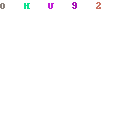
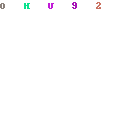
b) under View tab to tick Show hidden files and folders and non-tick Hide protected operating system files (Recommended) and then click OK;
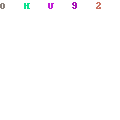
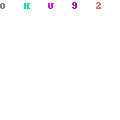
6. Open Windows Task Manager and close all running processes.
step: Use CTRL+ALT+DEL combination to open Task Manager

Please stop all the following processes.
random.exe
7. Delete all related files and registry values in your local hard disk C.
step: Hold down the Windows key on your keyboard and press the "R" button. Type in "regedit" and hit "Enter" to gain access to the Registry Editor.
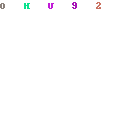
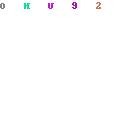
Registry:
HKU\S-1-5-21-2022167604-597765444-3474613015-1000\..\SearchScopes\{0ECDF796-C2DC-4d79-A620-CCE0C0A66CC9
HKLM\..\Toolbar: (no name) - {98889811-442D-49dd-99D7-DC866BE87DBC}
HKCU\SOFTWARE\INSTALLEDBROWSEREXTENSIONS\215 APPS (PUP.CrossFire.SA)
HKCU\Software\InstalledBrowserExtensions\215 Apps|4493 (PUP.CrossFire.SA)
HKCR\Typelib\{1D085C0A-E4F4-4F66-BDBF-4BE51015BFC3}
HKCR\Interface\{0D80F1C5-D17B-4177-AC68-955F3EF9F191}
HKCU\Software\Google\Chrome\Extensions\cjpglkicenollcignonpgiafdgfeehoj
HKLM\SOFTWARE\Google\Chrome\Extensions\cjpglkicenollcignonpgiafdgfeehoj
HKLM\SOFTWARE\Microsoft\Windows\Installer\UserData\S-1-5-18\Components\0000210981009040000000A0FE51DCC7
HKCR\CrossriderApp0005060.BHO
HKCR\CrossriderApp0005060.BHO.1
HKCR\CrossriderApp0005060.FBApi
HKCR\CrossriderApp0005060.FBApi.1
HKCR\CrossriderApp0005060.Sandbox
HKCR\CrossriderApp0005060.Sandbox.1
HKCU\Software\Cr_Installer\5060
step: delete any files and folders that have PUP.CrossFire.SA's name
Video Sample Guide on How to Remove PUP.CrossFire.SA
Kind Reminder: There's a lot of work need to do after you have resorted to security utilities. And what you need to do is to get into the kernel part of the affected system to kill related files and registries. Be careful when you do that, since any slight mistake would result in none-access to Windows again. Besides, PUP.CrossFire.SA is able to trigger random redirect virus, thus the removal of related files and key values to PUP.CrossFire.SA is not enough. Should you fail to kill PUP.CrossFire.SA and the mess of your browser, you are welcome to start a live chat with Tee Support experts 24/7 online for real-time help.



No comments:
Post a Comment